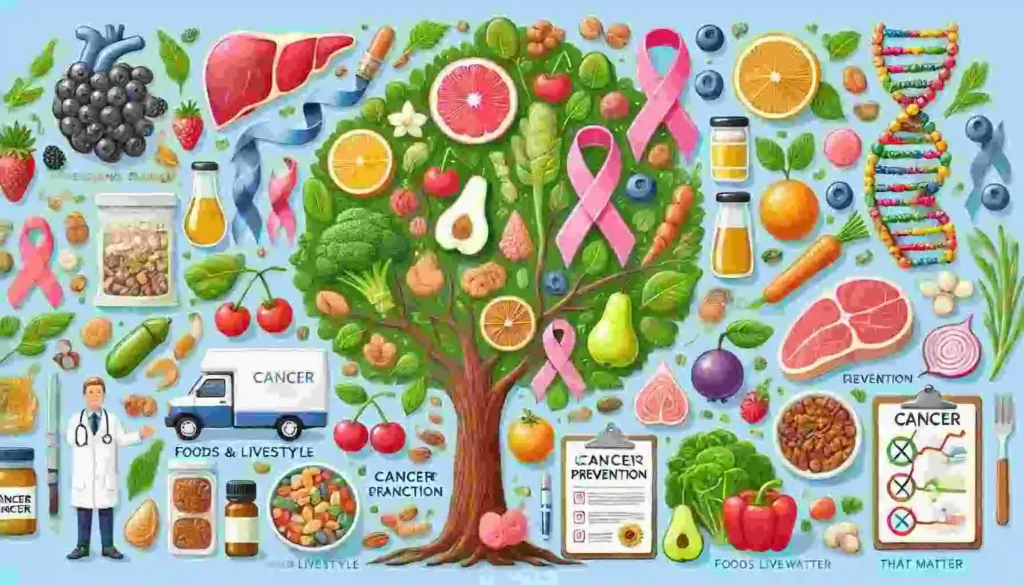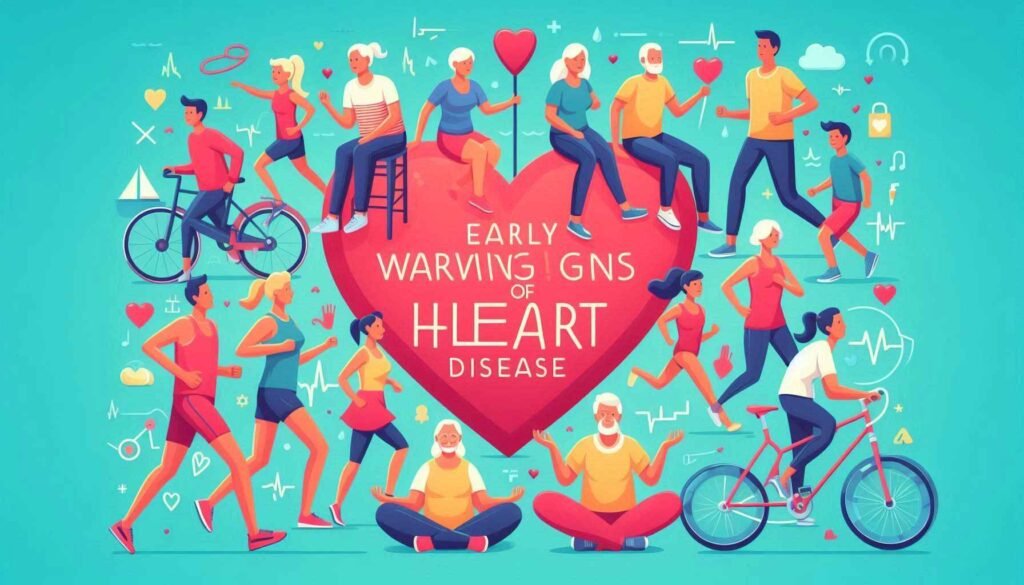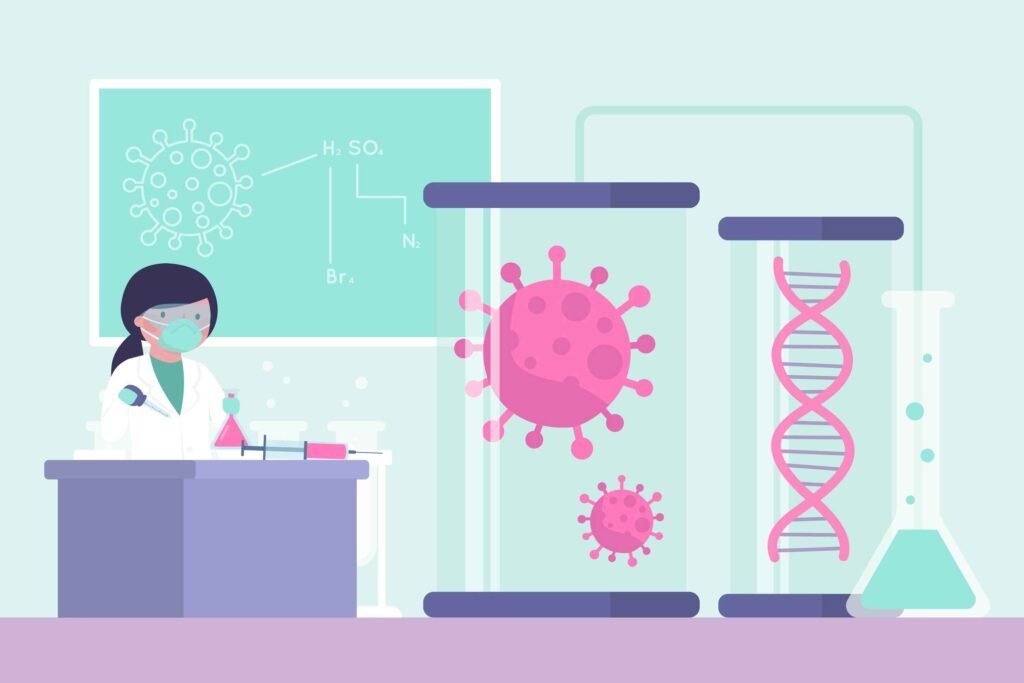
Understanding Cancer Prevention: Foods and Lifestyle Choices That Matter
Understanding Cancer Prevention: Foods and Lifestyle Choices That Matter
Cancer is a complex and multifaceted disease, but research shows that certain foods and lifestyle choices can significantly reduce the risk. By making informed decisions about your diet and daily habits, you can take proactive steps toward a healthier life. This guide highlights key strategies to lower your cancer risk through diet and lifestyle adjustments.
The Link Between Diet and Cancer Prevention
The relationship between diet and cancer is supported by extensive research. While no single food can guarantee immunity against cancer, certain dietary patterns are associated with reduced risk. These include consuming a variety of nutrient-dense foods, avoiding processed items, and maintaining a healthy weight.
1. Superfoods That Support Cancer Prevention
Cruciferous Vegetables
Cruciferous vegetables like broccoli, cauliflower, cabbage, and Brussels sprouts contain powerful compounds, such as sulforaphane, known to combat cancer. These vegetables are rich in fiber, antioxidants, and vitamins that help protect cells from damage.
How to Include Them:
- Add broccoli to salads or stir-fries.
- Steam cauliflower as a side dish.
- Incorporate cabbage into soups or stews.
Berries
Berries, including strawberries, blueberries, and raspberries, are loaded with antioxidants like ellagic acid, which may help deactivate carcinogens. Their high vitamin C content supports immune health and may aid in DNA repair.
How to Include Them:
- Use as a topping for oatmeal or yogurt.
- Blend them into smoothies.
- Enjoy as a snack or dessert.
Leafy Greens
Spinach, kale, and Swiss chard are nutritional powerhouses. They are high in carotenoids, which are thought to act as antioxidants, and folate, a B vitamin associated with DNA repair.
How to Include Them:
- Toss spinach into salads or sandwiches.
- Blend kale into green smoothies.
- Sauté Swiss chard with garlic and olive oil.
2. Foods to Limit or Avoid
Processed Meats
Processed meats, such as bacon, sausages, and deli meats, have been classified by the World Health Organization (WHO) as carcinogenic. They often contain preservatives like nitrates, which can convert to harmful compounds in the body.
Healthier Alternatives:
- Opt for lean, unprocessed protein sources like chicken or fish.
- Try plant-based protein options like beans, lentils, or tofu.
Sugary and Processed Foods
Diets high in added sugars and refined carbohydrates contribute to obesity, a significant risk factor for various cancers. These foods often lack essential nutrients and can lead to chronic inflammation.
Healthier Alternatives:
- Replace sugary snacks with fresh fruits.
- Choose whole grains like brown rice or quinoa.
Excessive Alcohol Consumption
Alcohol consumption is linked to several types of cancer, including breast, liver, and colon cancer. The risk increases with the amount consumed.
Tips to Cut Back:
- Limit alcohol intake to moderate levels (up to one drink per day for women and two for men).
- Replace alcoholic beverages with sparkling water or herbal teas.
3. The Role of a Balanced Lifestyle
Maintaining a Healthy Weight
Obesity is a well-established risk factor for many cancers, including breast, colon, and endometrial cancers. By balancing calorie intake with physical activity, you can achieve and maintain a healthy weight.
Strategies for Weight Management:
- Practice portion control.
- Incorporate regular exercise, such as walking, swimming, or yoga.
- Focus on nutrient-dense foods to feel fuller longer.
Staying Active
Physical activity not only helps maintain weight but also reduces inflammation, improves immune function, and regulates hormone levels—all factors that contribute to cancer prevention.
Ways to Stay Active:
- Aim for at least 150 minutes of moderate exercise per week.
- Incorporate strength training exercises twice a week.
- Make daily activities like gardening or walking part of your routine.
Avoiding Tobacco Products
Tobacco is the leading cause of cancer worldwide. Smoking not only causes lung cancer but is also linked to cancers of the mouth, throat, esophagus, pancreas, and more.
Steps to Quit Smoking:
- Seek professional support or counseling.
- Use nicotine replacement therapies, such as patches or gum.
- Join support groups or programs designed to help quit smoking.
4. The Power of Stress Management in Cancer Prevention
The Link Between Stress and Cancer
While stress itself doesn’t directly cause cancer, chronic stress can weaken the immune system, increase inflammation, and lead to unhealthy coping mechanisms like poor diet, smoking, or drinking. These factors increase cancer risk over time.
Effective Stress-Reduction Techniques
Managing stress is essential for overall health and well-being. Implementing daily stress-reduction techniques can significantly improve your quality of life and lower your cancer risk.
Mindfulness and Meditation:
Practicing mindfulness helps you stay present and reduces anxiety. Just 10 minutes of meditation a day can calm your mind and reduce stress hormones.
Breathing Exercises:
Deep-breathing techniques can quickly lower stress levels. Try inhaling deeply for 4 seconds, holding for 4 seconds, and exhaling for 4 seconds. Repeat for a few minutes.
Physical Activity:
Exercise, such as walking, swimming, or yoga, releases endorphins, which naturally boost your mood.
Sleep Hygiene:
Quality sleep is critical for stress reduction and immune function. Aim for 7-9 hours of sleep each night by establishing a regular bedtime routine and creating a restful sleep environment.
5. The Importance of Regular Health Checkups
Early Detection Saves Lives
Regular health screenings are essential for detecting cancer in its earliest stages, when treatment is most effective. Routine checkups allow your doctor to monitor any changes and recommend further tests if necessary.
Key Cancer Screenings:
- Breast Cancer: Annual mammograms for women aged 40 and above or earlier if there’s a family history.
- Cervical Cancer: Pap smears every 3 years for women aged 21-65.
- Colorectal Cancer: Colonoscopies starting at age 45, or earlier if at high risk.
- Prostate Cancer: PSA blood tests for men aged 50 and older.
Know Your Family History
A family history of cancer can increase your risk. Discuss your family’s medical history with your healthcare provider to determine the screenings you need.
6. Environmental Factors That Influence Cancer Risk
Reduce Exposure to Carcinogens
Carcinogens are substances known to cause cancer. While some exposure is unavoidable, you can limit your contact with these harmful agents through lifestyle changes.
Common Carcinogens to Avoid:
- Air Pollution: Limit outdoor activities on days with high pollution levels. Use air purifiers indoors.
- Pesticides: Choose organic produce when possible, and wash fruits and vegetables thoroughly.
- Household Chemicals: Use natural cleaning products to reduce exposure to toxic chemicals.
- Radiation: Limit unnecessary X-rays and wear protective gear when exposed to radiation at work or in medical settings.
Protect Yourself from UV Rays
Excessive sun exposure increases the risk of skin cancer, including melanoma.
Tips for UV Protection:
- Wear sunscreen with an SPF of 30 or higher.
- Avoid tanning beds.
- Wear hats and sunglasses when outdoors.
- Seek shade during peak sun hours (10 AM to 4 PM).
7. Building Sustainable Habits for Cancer Prevention
Start Small and Stay Consistent
Sustainable lifestyle changes are more effective than drastic, short-lived efforts. Focus on making small, manageable changes to your diet, exercise, and daily routine.
Examples of Small Changes:
- Swap sugary drinks for water.
- Add one extra serving of vegetables to your meals.
- Take a 15-minute walk after dinner.
Plan and Prep Your Meals
Meal planning ensures you eat a balanced diet and reduces the temptation to opt for unhealthy, convenient options.
Meal Prep Tips:
- Plan your weekly meals and grocery list.
- Prepare large batches of healthy foods like soups, salads, and grilled proteins.
- Store pre-cut vegetables and fruits for easy snacking.
Create a Supportive Environment
Surround yourself with people who support your healthy lifestyle. Friends, family, and communities can provide motivation and encouragement.
Ways to Build Support:
- Join fitness classes or wellness groups.
- Participate in online communities focused on healthy living.
- Share your goals with friends or family members for accountability.
8. Cancer Prevention for Different Life Stages
For Children and Teens
Healthy habits start early. Teaching children about nutrition, physical activity, and sun safety can reduce their lifetime cancer risk.
Tips for Parents:
- Encourage outdoor play and sports.
- Limit sugary snacks and processed foods.
- Teach kids about the importance of sunscreen.
For Adults
Adults need to balance work, family, and health. Prioritizing self-care and regular screenings can make a significant difference.
Healthy Adult Habits:
- Schedule annual checkups.
- Exercise regularly, even if it’s just a 30-minute walk.
- Find time for hobbies that reduce stress.
For Seniors
Cancer risk increases with age. Seniors should focus on maintaining a nutrient-rich diet, staying active, and keeping up with health screenings.
Senior Wellness Tips:
- Engage in low-impact exercises like swimming or tai chi.
- Ensure adequate calcium and vitamin D intake for bone health.
- Stay socially connected to boost mental and emotional health.
10. The Power of Quality Sleep in Cancer Prevention
How Sleep Affects Your Cancer Risk
Sleep is more than just rest—it plays a crucial role in cellular repair, immune function, and hormone regulation. Poor sleep habits have been linked to an increased risk of cancers such as breast, prostate, and colorectal cancer. Chronic sleep deprivation disrupts the body’s natural processes, leading to inflammation and weakened immunity.
Tips for Quality Sleep
To improve sleep quality and reduce cancer risk, incorporate these practices into your nightly routine:
- Stick to a Schedule: Go to bed and wake up at the same time each day, even on weekends.
- Create a Restful Environment: Keep your bedroom dark, quiet, and cool. Invest in a comfortable mattress and pillows.
- Limit Screen Time: Avoid screens at least one hour before bed to reduce blue light exposure.
- Practice Relaxation: Incorporate calming activities like reading, deep breathing, or meditation before bedtime.
Sleep and Shift Work
If you work night shifts or irregular hours, prioritize sleep by creating a consistent sleep schedule and optimizing your sleep environment. Use blackout curtains, white noise machines, and avoid caffeine close to your sleep time.
11. Strengthening Your Immune System for Cancer Prevention
The Role of Immunity in Cancer Prevention
Your immune system is your body’s defense against harmful invaders, including cancer cells. A strong immune system identifies and eliminates abnormal cells before they develop into cancer. Supporting your immune health is a critical part of cancer prevention.
Immune-Boosting Strategies
Boost your immunity with these proven techniques:
- Eat a Balanced Diet: Focus on nutrient-dense foods rich in vitamins, minerals, and antioxidants. Include fruits, vegetables, whole grains, lean proteins, and healthy fats.
- Stay Hydrated: Water supports bodily functions, including the immune response. Aim for at least 8 glasses a day.
- Exercise Regularly: Physical activity improves circulation, allowing immune cells to move freely throughout the body.
- Get Vaccinated: Vaccines like the HPV vaccine can prevent certain cancers caused by viruses.
- Avoid Smoking and Excess Alcohol: These habits weaken the immune system and increase cancer risk.
The Gut-Immune Connection
A healthy gut plays a major role in immunity. Support your gut health with:
- Probiotics: Found in yogurt, kefir, and fermented foods like sauerkraut.
- Prebiotics: Fiber-rich foods like bananas, garlic, and onions.
- Diverse Diet: Include a variety of fruits, vegetables, and whole grains to nourish gut bacteria.
12. Innovative Cancer Prevention Strategies
Advances in Genetic Testing
Genetic testing can identify inherited mutations that increase cancer risk. Knowing your genetic predisposition helps you make proactive health decisions.
Who Should Consider Genetic Testing:
- Individuals with a family history of breast, ovarian, or colorectal cancer.
- Those with rare cancers or cancer at a young age.
Personalized Nutrition Plans
Nutritional genomics, also known as nutrigenomics, tailors diet plans based on your genetic profile. This personalized approach can help you optimize nutrient intake for cancer prevention.
Wearable Health Technology
Wearable devices, like fitness trackers and smartwatches, help monitor physical activity, sleep, heart rate, and more. These insights encourage healthier habits and allow early detection of unusual changes in your body.
Vaccines for Cancer Prevention
Certain vaccines, like the HPV vaccine (protecting against cervical and throat cancers) and the Hepatitis B vaccine (protecting against liver cancer), have proven effective in cancer prevention. Stay up to date with recommended vaccinations.
13. Creating Your Long-Term Cancer Prevention Plan
Step 1: Set Realistic Goals
Define clear, achievable goals for diet, exercise, and lifestyle changes. Examples include:
- Diet Goals: Eat at least five servings of fruits and vegetables daily.
- Exercise Goals: Walk 30 minutes five times a week.
- Sleep Goals: Aim for 7-9 hours of quality sleep each night.
Step 2: Track Your Progress
Use journals, apps, or trackers to monitor your habits. Tracking helps you stay accountable and celebrate small wins.
Step 3: Schedule Regular Health Screenings
Create a calendar for annual checkups and cancer screenings. Mark reminders for mammograms, colonoscopies, or other relevant tests.
Step 4: Build a Support Network
Surround yourself with friends, family, and professionals who support your goals. Share your journey and seek motivation from others who prioritize health.
Step 5: Educate Yourself
Stay informed about the latest cancer prevention research. Reliable sources like health websites, medical journals, and healthcare professionals can offer valuable insights.
Step 6: Adapt and Improve
Life changes, and so should your plan. Review your progress every few months and adjust goals as needed. Flexibility helps you maintain long-term success.
14. Inspiring Healthy Habits in Your Community
Lead by Example
Inspire others by living a healthy lifestyle. Your actions can motivate family, friends, and coworkers to make healthier choices.
Share Knowledge
Host workshops, write blogs, or share tips on social media about cancer prevention. Spreading awareness helps create healthier communities.
Participate in Events
Join cancer prevention campaigns, charity walks, or community fitness challenges. These activities promote health and bring people together.
Advocate for Change
Support policies promoting healthier environments, such as smoke-free zones, access to healthy foods, and cancer education programs.



